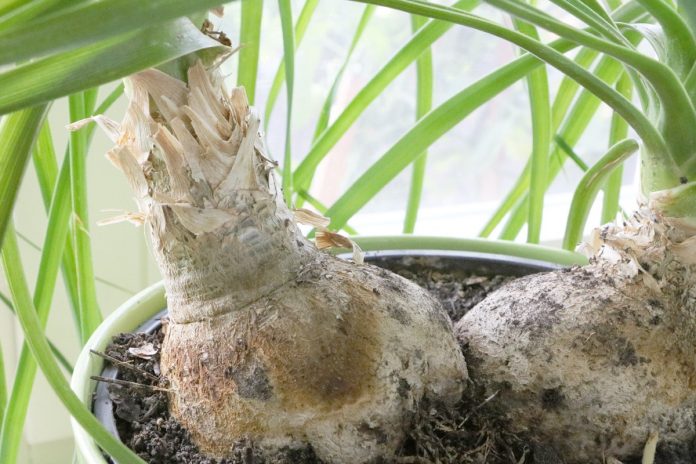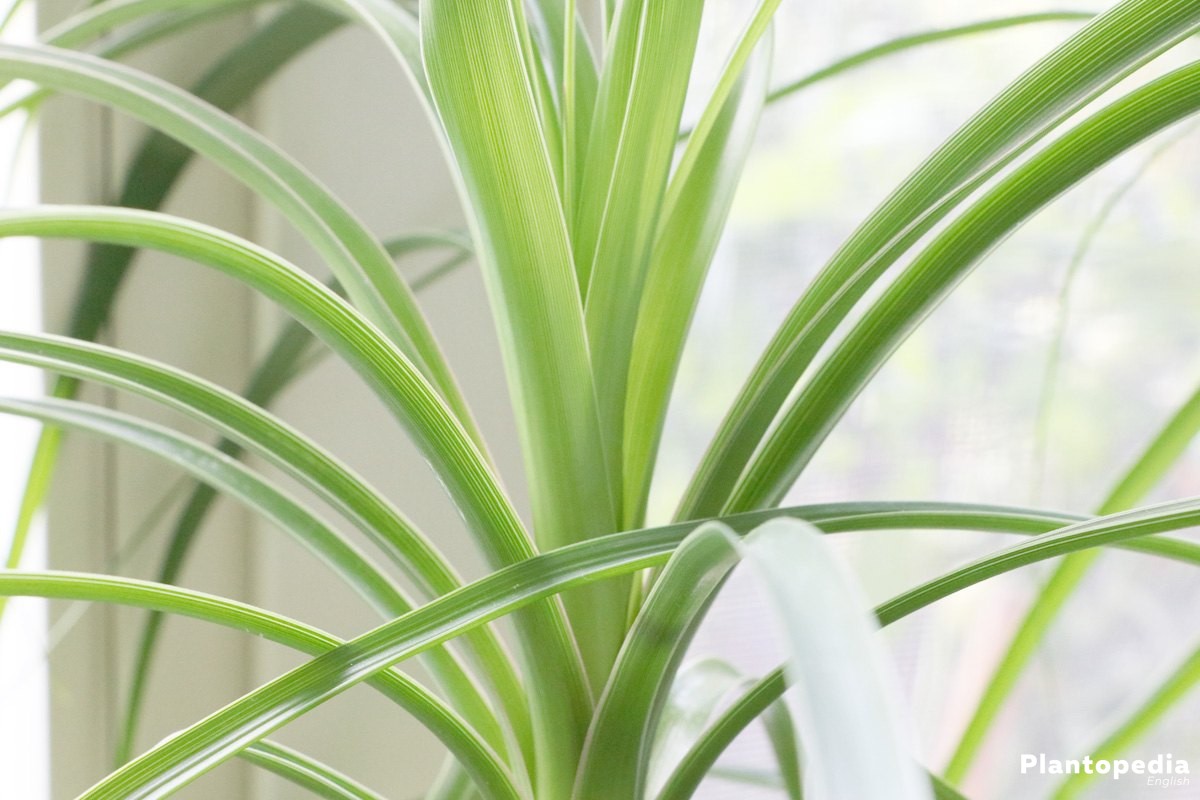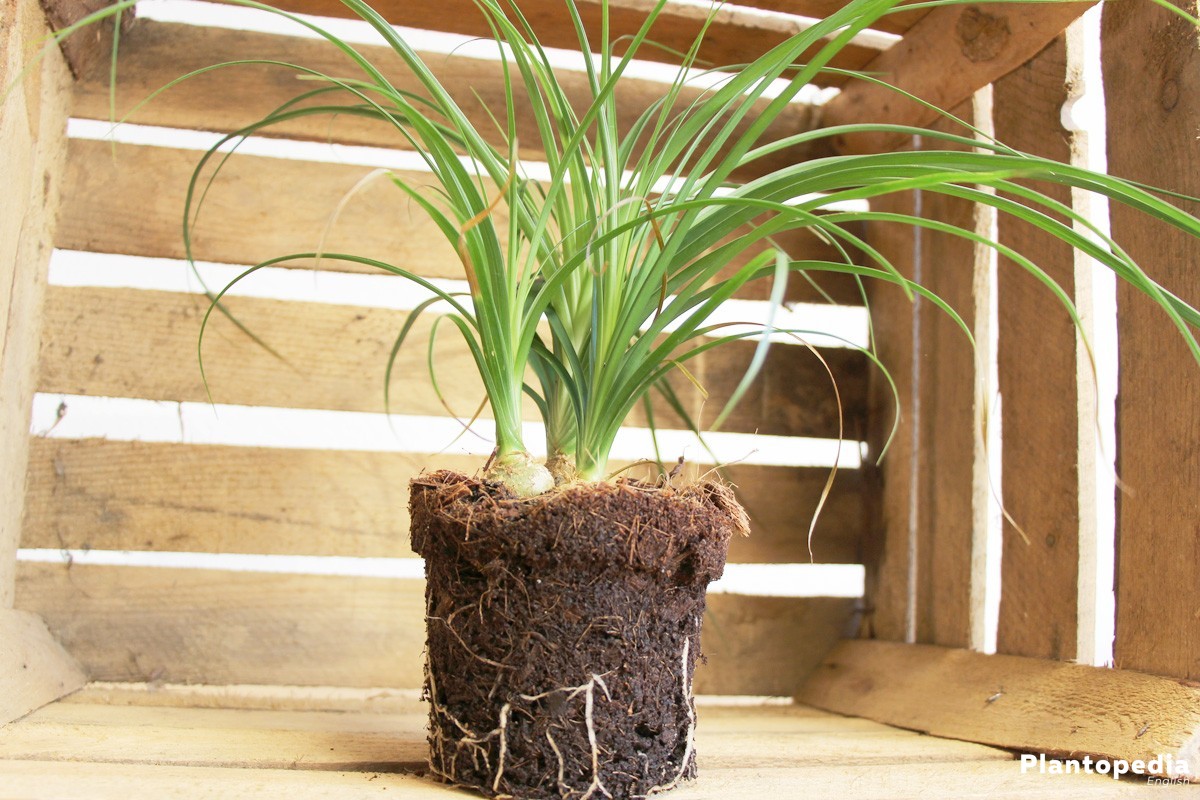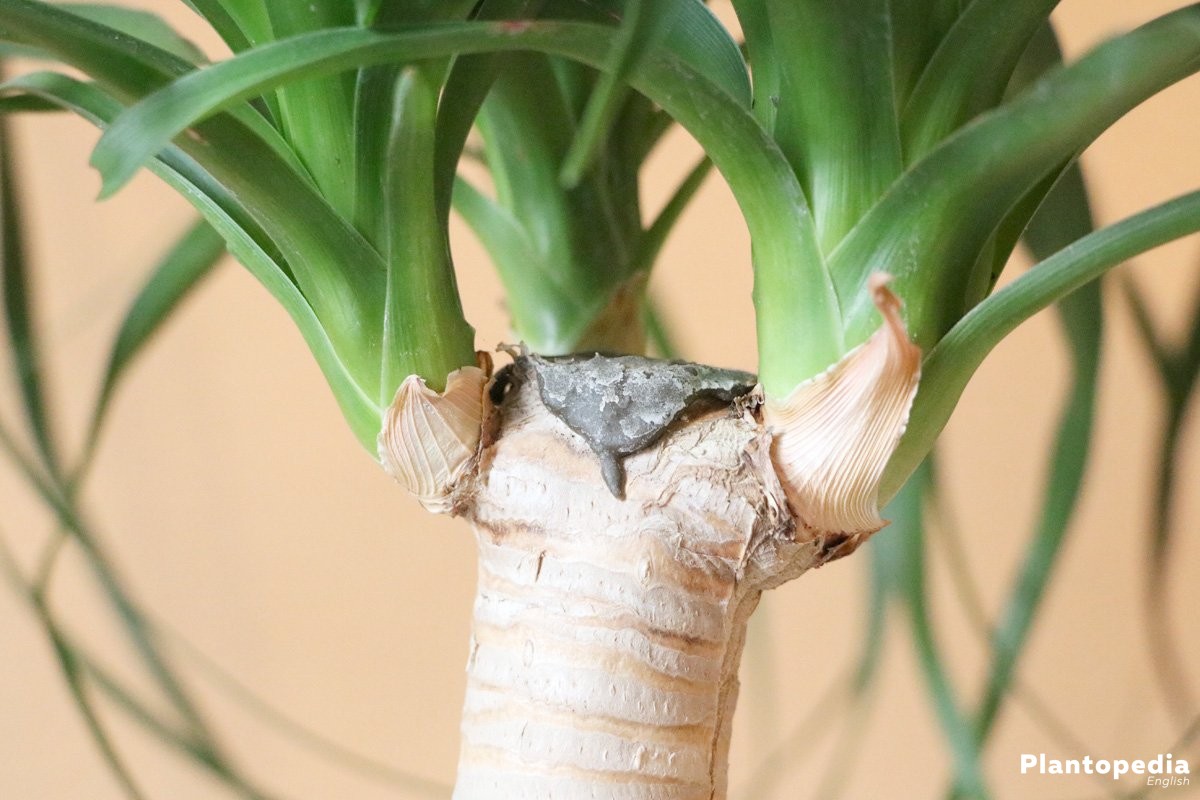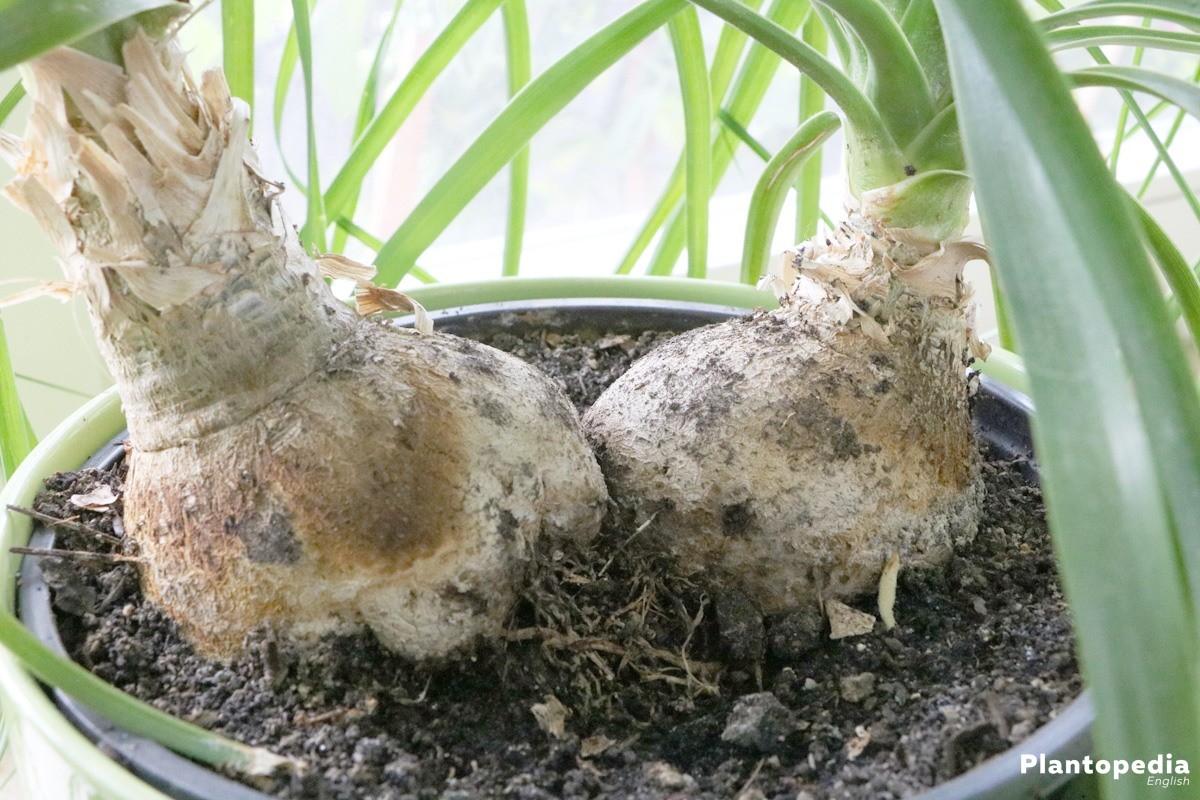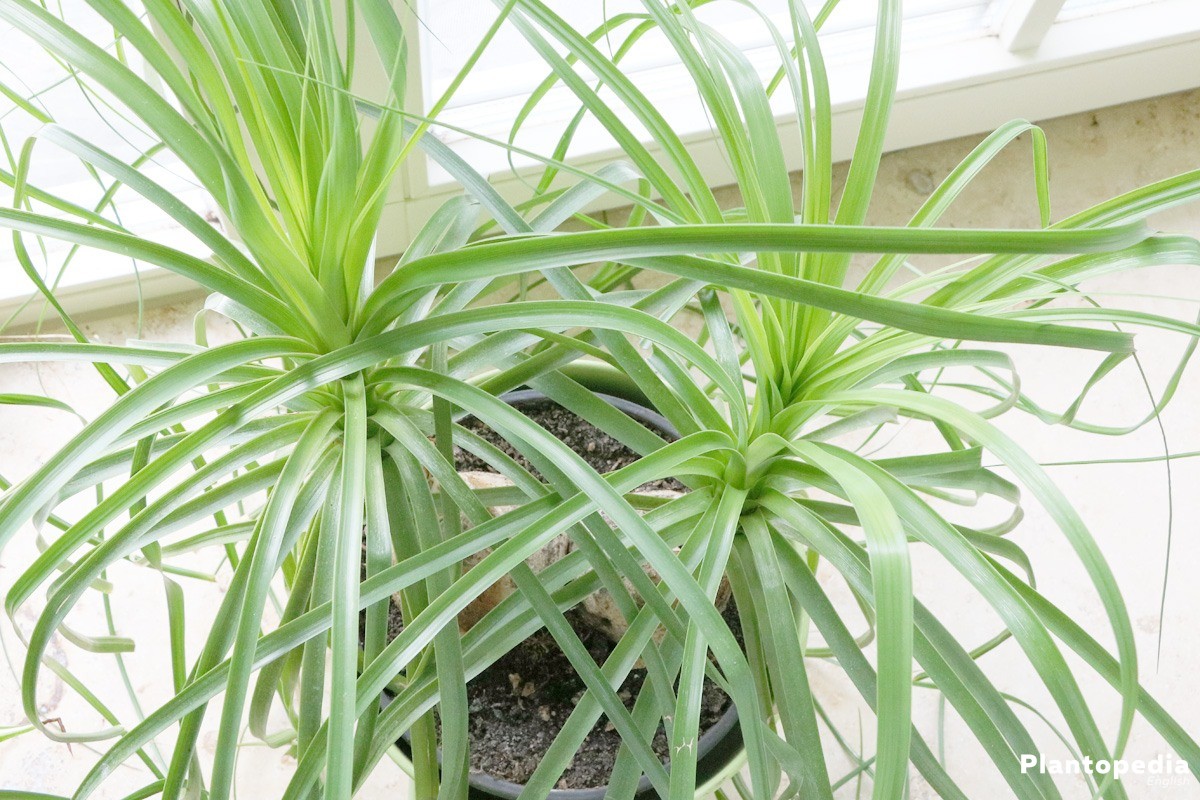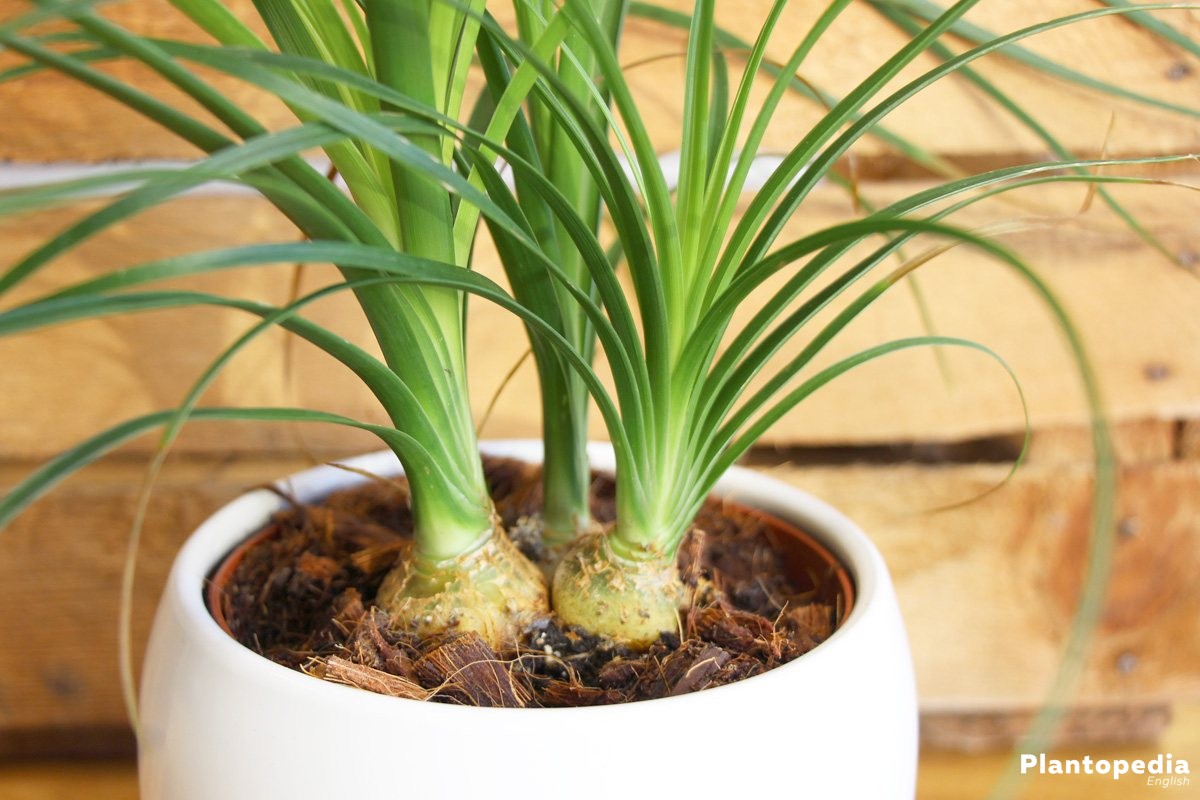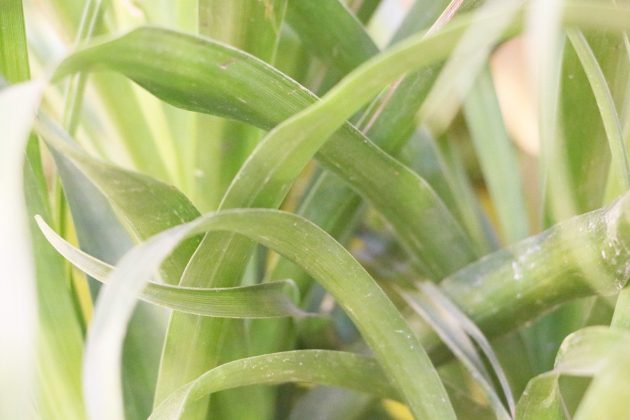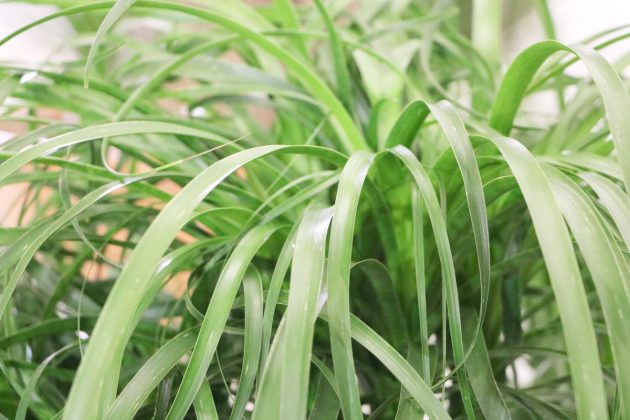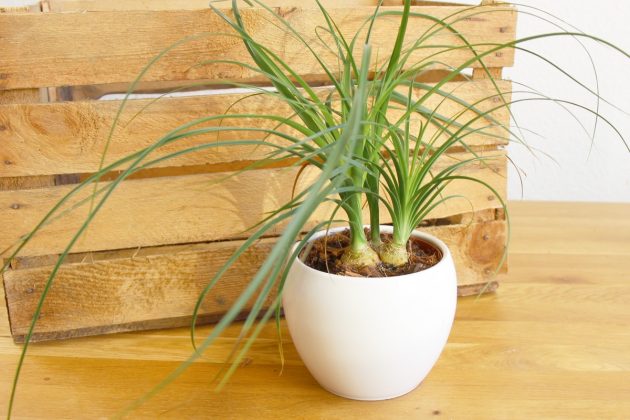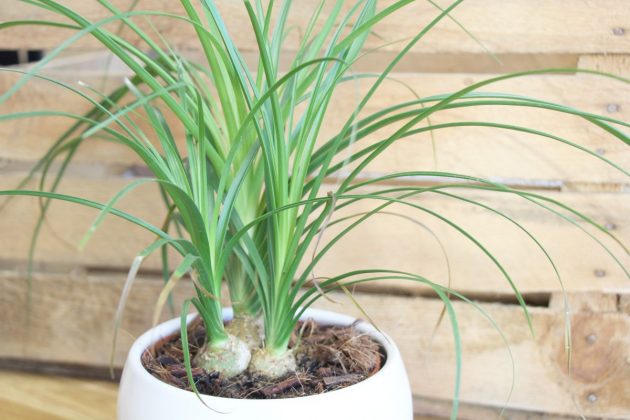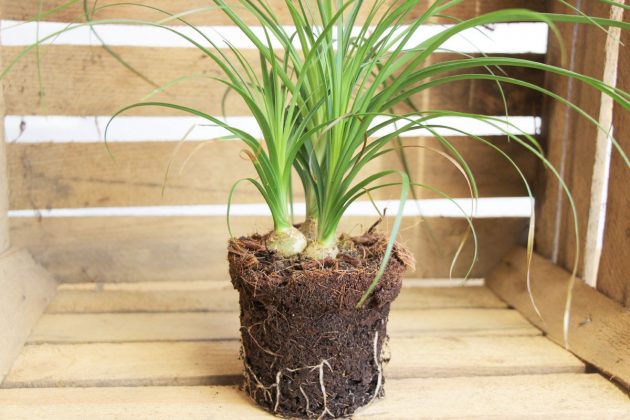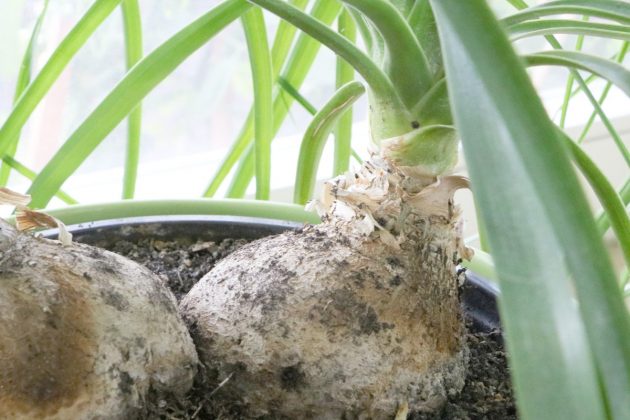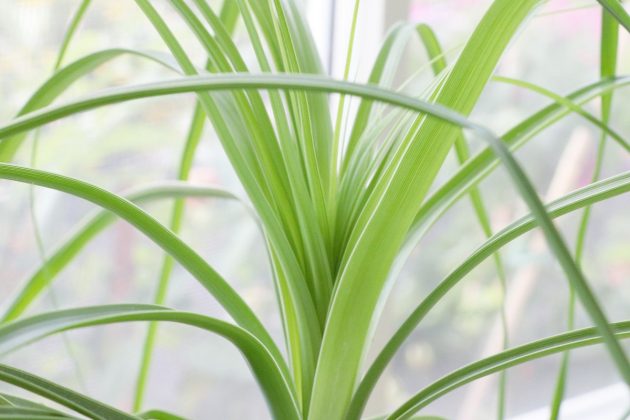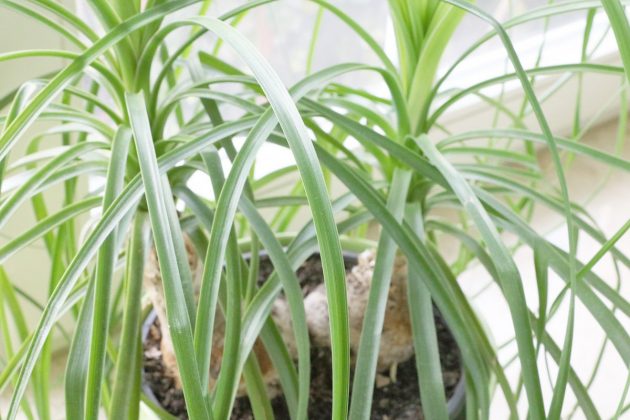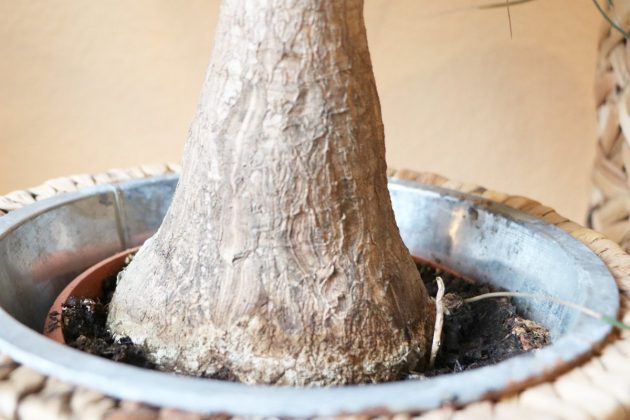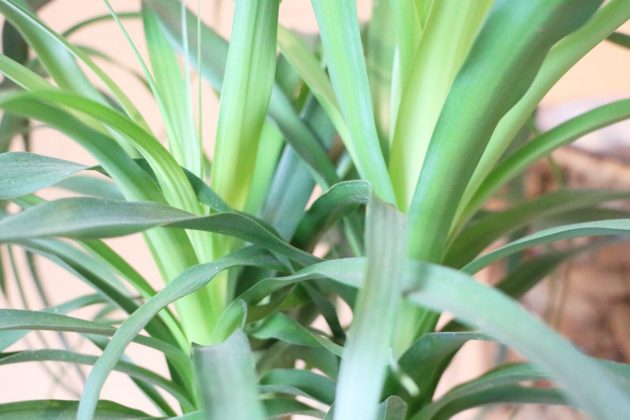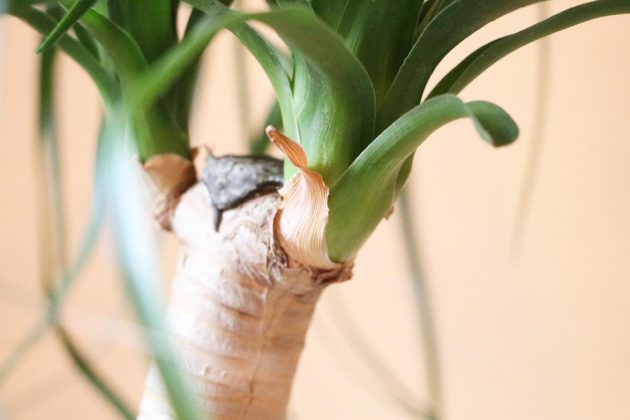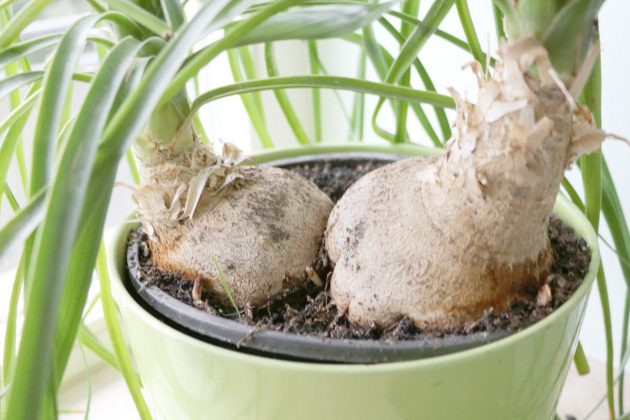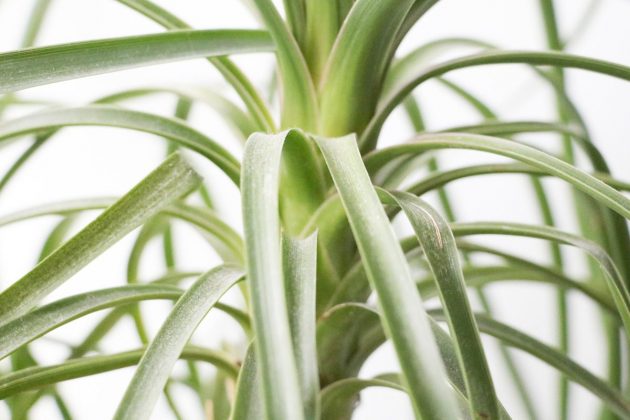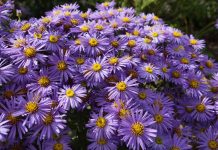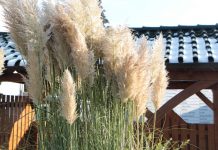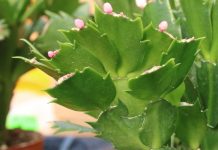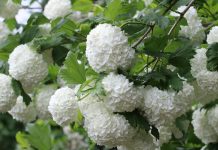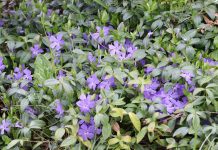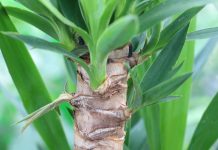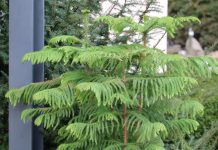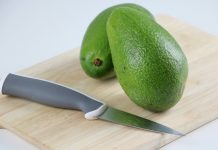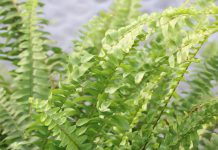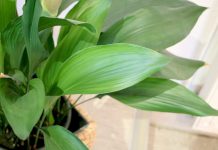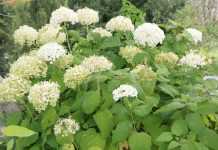With its extravagant appearance, the elephant’s foot (Beaucarnea) is popular as an impressive indoor plant. Over its thick stem base raises a thin stem and over this sits enthroned a thick leaf crown. Because the exotic succulent plant rations its own water supply and rarely needs attention, the ponytail palm has become known as a great beginner’s plant. Read here all about the proper care.
Plant Profile
Contents
- is a species of plant in the family Asparagaceae
- most popular species in the genus Beaucarnea
- popular names: elephant’s foot, ponytail palm
- originally from South America, primarily Mexico
- succulent tree with thick Caudex and thin stem
- growth height indoors 80 to 150 cm
- leaf crown with green, straight leaves up to 90 cm long and 2 cm wide
- white, cream-yellow or yellow panicle blossoms
- minimum temperature 5-8 degrees Celsius
- very slow growth
- high life expectancy of up to 100 years
With its spherical-thick Caudex, thin shaped stem and opulent foliated crown, the elephant’s foot dominates the scene on every window sill or summery balcony. This exotic plant with character from the sunny regions South America’s autonomously regulates its water supply as a succulent.
Care
The ponytail plant (Beaucarnea) has become known as a great beginner’s plant, because the most difficult part of cultivating indoor plants is already taken care of. In the following care manual, you will find all additional steps that need to be considered when bringing the elephant’s foot to its full potential.
In the subtropical climate of its original habitat, the elephant’s foot can read a growth height of 9 m in the course of decades. Under the local conditions there, the tree also shows pretty panicle blossoms at an advanced age. The panicle blossoms only develop rarely when cultivated indoors.
Location
Thanks to its extravagant silhouette, the elephant’s foot (Beaucarnea) deserves a box seat on the window sill. For the succulent tree to show its best side, the conditions should be as close as possible to the subtropical light and temperature conditions of its home region.
Therefore, you should provide the ponytail palm with a location consistent with the following conditions:
- sunny place at a window facing West or East
- during vegetation period, warm temperatures from 20 to 25 degrees Celsius
- during the winter break, bright and cool from 10 to 12 degrees Celsius
From May to September, the elephant’s foot is comfortable on a sunny balcony, if he has a warm place sheltered from wind and rain. For the thin stem to develop bolt upright, the light should shed on the entire Beaucarnea. If this premise cannot be fulfilled, circulate the tree every 14 days at 90 degrees to avoid the stem leaning towards the light.
Substrate
The extensive relationship with palm trees shows in the elephant’s foot’s (Beaucarnea) low requirements for soil. Use a light, well permeable and nutrient-low substrate for the exotic grove. The specialist trade will offer special palm tree or succulent soil, which is comparatively quite expensive. Cheaper but suitable is a self-made mix.
For two parts of standard soil, use one part perlite and one part coconut fibers. More adequate additions are quartz sand, lava pellets, expanded clay and vermiculite. A high peat content is considered a reduction in quality in this context as it will lead to compaction of the substrate in the long run.
Watering
In its roundly formed stem base – the caudex – the elephant’s foot, Beaucarnea saves its water stock. They are at peak during the vegetation period from spring to fall. Hence, regular watering is necessary to balance the demand. During winter, the demand for water reduces significantly.
This is how you do it correctly:
- regularly water the elephant’s foot from March to September
- do not leave water in the saucer over a long time
- let the substrate dry well between watering
- from October to February, only water in short sips, if the soil is almost dry
- as irrigation water use filtered rain water or decalcified tap water
If you forget watering during spring and summer time one time, the elephant’s foot, Beaucarnea uses its water stock. You can recognize this process, because the caudex does not feel as plump. As soon as you notice this shortcoming, submerge the pot in soft water for a bit. This emergency plan should not become a regular thing.
Fertilizing
The nutrient supply is limited to the growth period. From April to September, please add a liquid cacti fertilizer to the irrigation water every two to three weeks. From October to March, discontinue the nutrient supply. If you re-pot the ponytail palm in spring, fertilizing needs to start the earliest after eight weeks, when the stock in the pre-fertilized substrate are used up.
Cutting
If the elephant’s foot (Beaucarnea) receives tender care, a magnificent leaf crown develops as a sign. The elegant, straight leaves can reach as far as to the ground. Do not take the scissors to shorten the leaves. At the cut surface, brown wound tissue develops which is not very pleasant on the eye. If you cut these brown parts again, the would tissue develops again as well until the magnificent tree in the end is left with a green buzz cut. Rather, place the elephant’s tree on a small pedestal where it can show off its lush foliage.
If the tree grows too high for your liking, you can shorten the stem. Place your scissors or saw at least 30 cm above the caudex. Powder the cut surface with charcoal cinder. The use of a wound seal product is not necessary. Within a few weeks, a beaucarnea will sprout again.
Overwintering
The plant physiology of an elephant’s tree (Beaucarnea) is based on a warm, rainy growth period and a cool dry resting period. In the fall, you need to adjust the care according to the changed requirements.
It is simple like this:
- place the elephant’s tree in a bright, cool room from October until February
- ideal is a place at the window with temperatures between 8 and 12 degree Celsius
- only water a little and do not fertilize
A resting beaucarnea should not meet dry heater air. Very low humidity in winter will attract pest infestations, such as mealy bugs. Therefore, place the elephant’s foot in the not heated bedroom or stair case.
Re-Potting
For gradual growth, the elephant’s foot needs to be re-potted in a larger pot about every 4 to 5 years. The unorthodox growth form calls for a similarly eccentric pot. To provide the big stem base with an adequate habitat, the planting pot should be more wide than high. For a 100 cm, high elephant’s tree, a 30 to 35 cm wide and only 10 to 15 cm high planting bowl would be ideal.
An ideal habitat for the shallow root plant has low substrate volume, because water-logging can only rarely occur.
This is how to re-pot beaucarnea correctly:
- best time is end of February or beginning of March
- the new pot allows the succulent stem base 2 cm of free space all around
- use a drainage made from clay fragments or expanded clay balls above the opening in the bottom
- above that fill in a layer of succulent soil and press on
Take the elephant’s tree (Beaucarnea) out of the pot and remove as much substrate as possible. At the same time, dried, dead or rotten roots can be cut out. Plant the tree in a new pot in a way that the root bale is only covered two to three cm high with soil. At the water, water moderately with soft water. Only start the nutrient supply again after two months.
Multiplication
Cuttings
A well-developing elephant’s foot will produce in its crown side shoots, which are prefect as cuttings. Optionally, cut or break one or more of the side shoots directly from the stem. Fill a pot with cultivation soil or a mix of peat and sand. Plant the cutting in this and irrigate with soft water.
Put over a transparent cover to create a humid-warm micro climate. If you decide for a plastic bag, use two wooden stick to create space so the material does not touch the leaves. In a semi-shaded, warm window spot, keep the substrate a little wet and air out the cover several times per day.
If a fresh budding is showing, the cover can be removed. Continue watering regularly without causing water-logging. When the small elephant’s tree has grown roots through the entire cultivation pot, plant it in a planting bowl and care in the same way as for the adult plants
Seeds
The specialist trade offers certified seeds for the generative multiplication, because the elephant’s food only rarely blooms when kept inside. This option has the advantage that the stem base can be better develop to a succulent caudex as this is the case with cuttings. Naturally, multiplication by seeds does not have a high success rate. Experience shows that from an average 5 seeds 1 new elephant’s tree will be formed.
This is how sowing works:
- fill a low cultivation pot with cultivation soil or coconut fibers substrate and moistening
- place seed 4 to 5 cm apart on the soil and press on
- cover the cultivation pot with a plastic bag or take to a green house
Under the influence of a constant heat of 23 to 25 degree Celsius, water regularly. The germination can even under ideal conditions take up to several weeks or months. Only when the seed leaves are showing, the cover can be removed or the pots can be taken out of the inside green house and be resettled on a semi-shaded window sill. Separate the seedlings at the latest, when the cultivation tray gets crowded.
Poisonous for animals
An elephant’s tree has a high content of saponin. This contents are considered poisonous for animals. The elephant’s tree is not suitable as a house plant in a home with cats or young dogs. There is now health hazard for people.
Diseases
Normally, the elephant’s plant will be spared from the typical diseases of indoor plants. If there are certain problems, they can usually be traced back to a lack of care. Common symptoms and tips for resolving them are collected here for you.
Brown leaf tips
- signal too wet substrate: Re-pot in dry substrate and water less
Brown-colored foliage
- could be a sign for too low temperature
- the elephant’s tree needs to be placed in 20 to 25 degree Celsius
A wrinkly caudex
- results from a lack of water: Immerse the pot with the dried substrate in water
If the leaves in the lower parts of the crown turn brown and fall off, it is part of a natural process. Parallel to this new leaves sprout at the top of the crown.
Mealy Bugs
Problems with pest infestations usually occurs when there is the influence of dry air from a heating system in winter. Small, white cotton balls signal the infestation of mealy bugs. Protected by a fluffy wax armor, the bugs suck out the plant juice from the foliage. A result are crippled trees and de-formed leaves. If no counter-measures are implemented, the leaf crown will die off in the long run.
This is how you take care of the bugs:
- place the infested tree in a bright and cool room under quarantine
- wipe off the mealy bugs from the leaves with an alcohol-soaked cloth
- spray with a mix of one litre water and one table spoon of paraffin oil as well as one to two drops of liquid soap as an emulsifier
- put the elephant’s foot in an air-tight plastic bag for 4 to 5 days
In the phase of early pest infestation, you can simply shower of the crown upside down with a strong water jet. After that, observe the tree under quarantine conditions and check if the pest has found an end. Preventatively, spraying the leaves regularly with luke-warm, lime-free water helps against the pest infestation.

